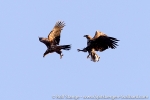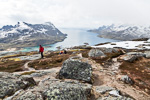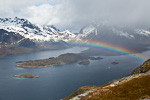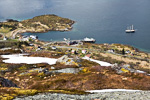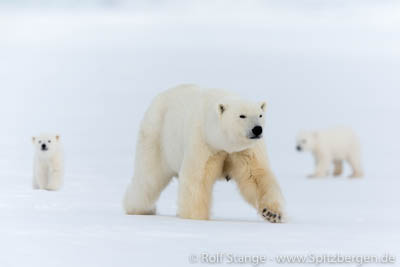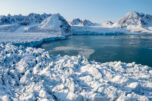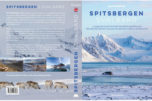-
current
recommendations- Liefdefjord
New page dedicated to one of Spitsbergen's most beautiful fjords. Background information and many photos.
- New Spitsbergen guidebook
The new edition of my Spitsbergen guidebook is out and available now!
- Liefdefjord
New page dedicated to one of Spitsbergen's most beautiful fjords. Background information and many photos.
Seitenstruktur
-
Spitsbergen-News
- Select Month
- April 2024
- March 2024
- February 2024
- January 2024
- December 2023
- November 2023
- October 2023
- September 2023
- August 2023
- July 2023
- June 2023
- May 2023
- April 2023
- March 2023
- February 2023
- January 2023
- December 2022
- November 2022
- October 2022
- September 2022
- August 2022
- July 2022
- June 2022
- May 2022
- April 2022
- March 2022
- February 2022
- January 2022
- December 2021
- November 2021
- October 2021
- September 2021
- August 2021
- July 2021
- June 2021
- May 2021
- April 2021
- March 2021
- February 2021
- January 2021
- December 2020
- November 2020
- October 2020
- September 2020
- August 2020
- July 2020
- June 2020
- May 2020
- April 2020
- March 2020
- February 2020
- January 2020
- December 2019
- November 2019
- October 2019
- September 2019
- August 2019
- July 2019
- June 2019
- May 2019
- April 2019
- March 2019
- February 2019
- January 2019
- December 2018
- November 2018
- October 2018
- September 2018
- August 2018
- July 2018
- June 2018
- May 2018
- April 2018
- March 2018
- February 2018
- January 2018
- December 2017
- November 2017
- October 2017
- September 2017
- August 2017
- July 2017
- June 2017
- May 2017
- April 2017
- March 2017
- February 2017
- January 2017
- December 2016
- November 2016
- October 2016
- September 2016
- August 2016
- July 2016
- June 2016
- May 2016
- April 2016
- March 2016
- February 2016
- January 2016
- December 2015
- November 2015
- October 2015
- September 2015
- August 2015
- July 2015
- June 2015
- May 2015
- April 2015
- March 2015
- February 2015
- January 2015
- December 2014
- November 2014
- October 2014
- September 2014
- August 2014
- July 2014
- June 2014
- May 2014
- April 2014
- March 2014
- February 2014
- January 2014
- December 2013
- November 2013
- October 2013
- September 2013
- August 2013
- July 2013
- June 2013
- May 2013
- April 2013
- March 2013
- February 2013
- January 2013
- December 2012
- November 2012
- October 2012
- September 2012
- August 2012
- July 2012
- June 2012
- May 2012
- April 2012
- March 2012
- February 2012
- January 2012
- December 2011
- November 2011
- October 2011
- September 2011
- August 2011
- May 2011
- April 2011
- March 2011
- February 2011
- January 2011
- December 2010
- November 2010
- September 2010
- August 2010
- July 2010
- June 2010
- May 2010
- April 2010
- March 2010
- February 2010
- November 2009
- October 2009
- August 2009
- July 2009
- June 2009
- May 2009
- April 2009
- March 2009
- February 2009
- January 2009
- December 2008
- November 2008
- October 2008
- August 2008
- July 2008
- June 2008
- May 2008
- April 2008
- March 2008
- February 2008
- April 2000
- Select Month
-
weather information

| THE Spitsbergen guidebook |
Home →
Daily Archives: 24. May 2015 − News & Stories
Raftsund & Vesterålen
Sun
24 May
2015
We watch the southern Vesterålen islands passing by while we are making miles to the north. Scenic coastlines and mountains, sea eagles and even orcas make the afternoon a very pleasant and interesting experience.
- gallery anchor link: #gallery_668
Click on thumbnail to open an enlarged version of the specific photo.
Digermulen
Sun
24 May
2015
We are certainly not the first tourists in this area. The German emperor Wilhelm II. was here in 1889. If he had only spent more time traveling and less with politics, it might have saved the world a lot of trouble, who knows.
Despite all the troubles that he had with his job – his own fault! – he managed to travel to Norway quite a lot. And twice he made it to Digermulen, a little village – about 300 inhabitants – at the southern end of Raftsund. That is the strait that separates Austvågøya (Lofoten) from Hinnøya (Vesterålen). There is a mountain next to Digermulen that is called Digerkollen. It is not so terribly diger (big), actually not at all with an altitude of 384 m, that is something we can do. And nobody has to carry up plates of granite with our names incarved after us. We are more than happy with our signatures in the Gipfelbuch (what is that in English?).
- gallery anchor link: #gallery_666
Click on thumbnail to open an enlarged version of the specific photo.
The way up, across stones, mud and snow, takes about 1 ½ hours, with an interesting mixture of rain, sun, snow and sun again. Luckily, it remains sunny as we reach the top, so we can enjoy splendid views of Raftsund, Hinnøya, Austvågøya and and a number of smaller islands. An imperial view, indeed!
Winter season coming to an end; polar bear families in Billefjord
Inspite of thawing periods in April, the winter season has lasted for quite a long time. Now it is coming to an end. In late April, the weather had finally stabilized with temperatures below zero and many sunny days, bringing good touring weather beyond 17 May, the Norwegian national day.
The spring has brought new inhabitants to inner Isfjord: two polar bear families have been regularly seen in Billefjord and Tempelfjord, including one with 3 cubs, a great rarity. This very pleasant fact brought controversial discussions regarding snow mobile traffic in these frequently visited fjords. The Sysselmannen (local authorities) asked the public several times to execute good self control and keep traffic to an unavoidable minimum. Nevertheless, small groups were observed several times too close or too long near the bears.
Experience for example from Tempelfjord in 2013 shows that polar bears, including families with young offspring, do not necessarily suffer from frequent traffic. In that spring, a mother with 2 first year cubs spent several months in Tempelfjord, which was frequently visited by large numbers of groups. Respectful behaviour contributed to the well-being of the bear family, which was generally not visibly affected by traffic, but seemed to enjoy a good and healthy period, with regular hunting success.
Unfortunately, both cubs from 2013 are most likely dead by now. One died in Billefjord a short time after tranquilization for scientific reasons. There is now evidence for the tranquilization being the cause of the death, but the assumption is not far away.
The second one of those 2 cubs was most likely the one that was shot near Fredheim in late March 2015 by tourists in their camp. The bear had injured one person in a tent and was then injured with several bullets from a revolver. It was later shot by the police.
These observations indicate that a larger number of well-controlled tourists, with respectful behaviour, is less of a problem than a smaller number of visitors (including scientists) with more unusual activities, involving a higher risk. An interesting impression, as the public reception of tourists is generally much worse than that of scientists.
Currently, the greatest public concern is about the polar bear family with 3 cubs. Discussions in social networks make it clear that there is public concern and interest, at least locally, and there is little tolerance for behaviour that might disturb or even endanger the bears. On the other hand, the mother has already been marked by scientists, which involves tranquilization of at least the mother. It is not known in public wether the scientists used snow mobiles or helicopters to get within shooting range, but in any way this can safely be assumed to be a traumatic experience for the whole family, within a period that is believed to be so sensitive for the survival of the young bears that the Sysselmannen asks the public to minimize traffic in the same area.
Now, the snow mobile season is over anyway, which will make life for the polar bears a bit more quiet, as individual do not have the opportunity anymore to get too close to the bears.
Polar bear family in Billefjord, April 2015
News-Listing live generated at 2024/April/19 at 06:39:17 Uhr (GMT+1)

